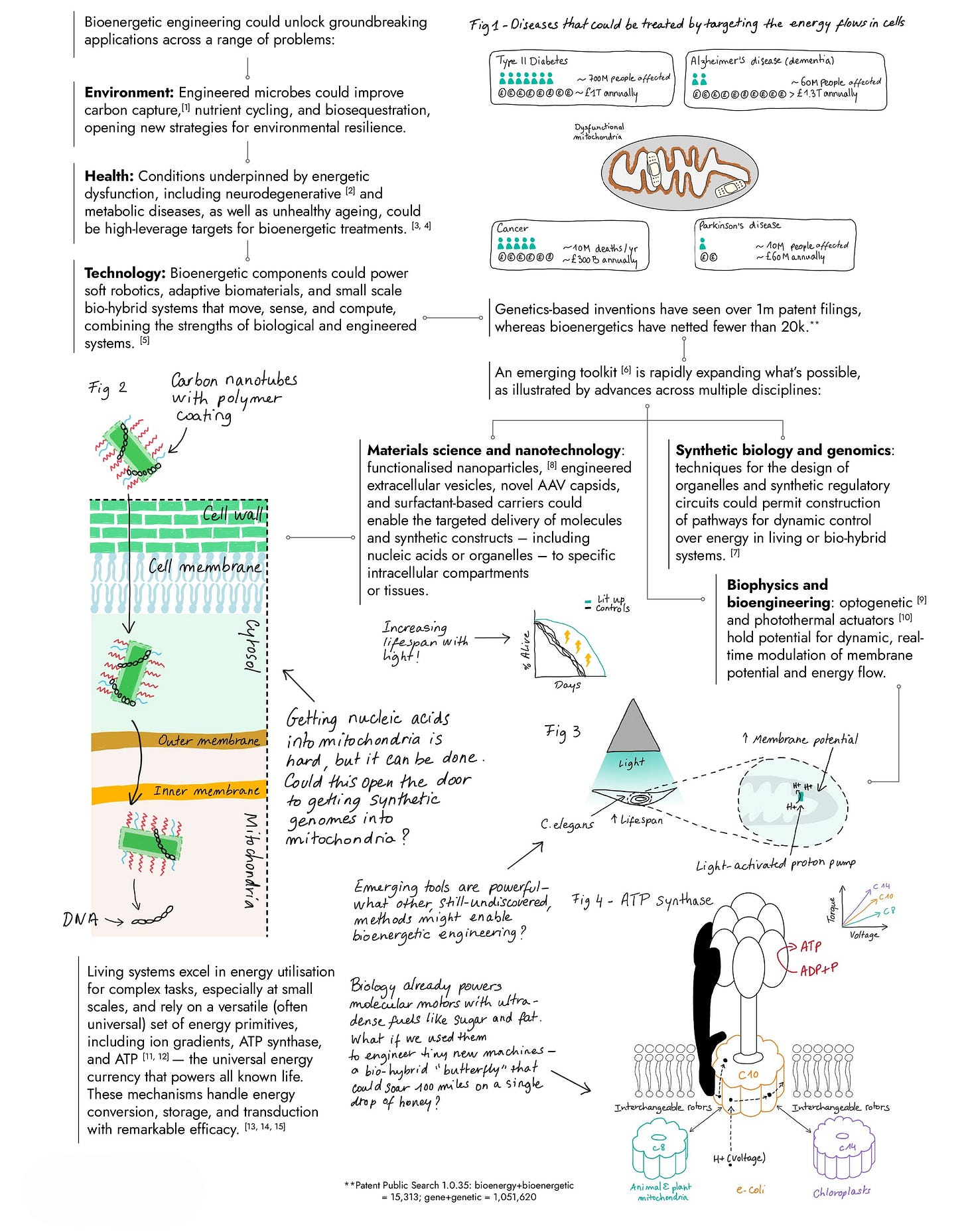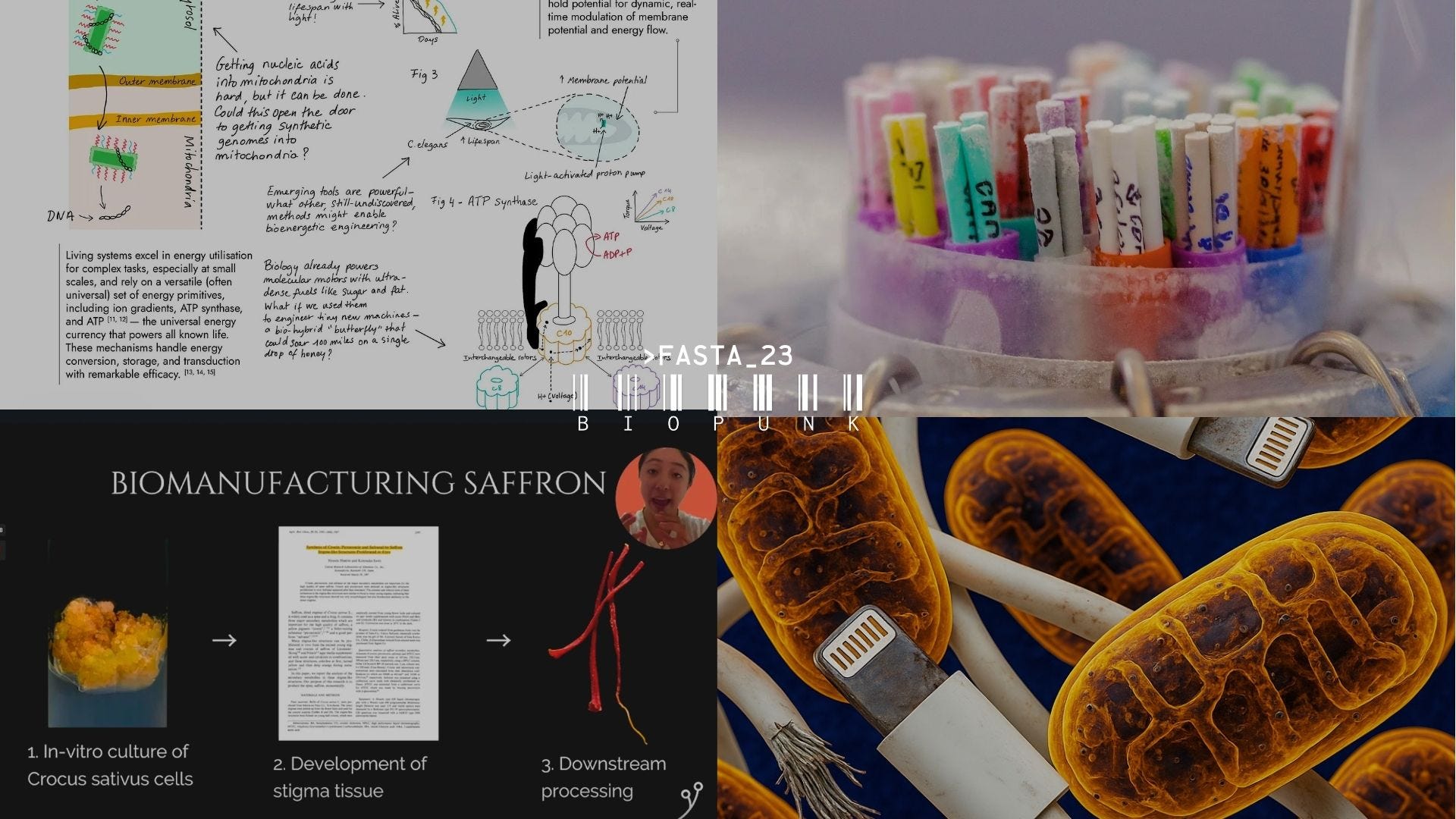>FASTA_23
Bioenergic engineering; Sony's biotech cameras; >2x longer DNA synthesis; AI and biosecurity; Peter Pan’s lost IVF kids; Cattle GM probiotics; Lab-grown saffron; Planned obsolescence in biotech
>FASTA: weekly short reads of the global biotech ecosystem | Papers and patents, acquisitions and bankruptcies, biotech philosophy | Read in under 5 min | Follow on LinkedIn, X, and now Instagram too! | Versión en Español
Pilgrim is proud to sponsor >FASTA! We’re developing the next generation of military medicine to meet the operational demands of modern warfare—moving beyond theory and bringing biotechnology from the benchtop to the battlefield.
1/10: Bioenergic engineering at ARIA
ARIA comes up with idiosyncratic calls for research projects in overlooked areas, makes them look sexy (see artwork below), and gives great scientists money to pursue them. I find that very cool. Like, had you ever thought about engineering how living things use and generate energy (not DNA, not information, ENERGY!) to treat neuro disease or create environmental solutions???
Their upcoming program is dubbed “Precision Mitochondria” and aims to build a toolkit to study and edit mtDNA precisely, for the first time.

2/10: Unproven stem cell therapies in Florida
A new law now allows doctors in Florida to administer unapproved stem-cell therapies as long as these are retrieved, manufactured, and stored in a facility that is registered and regulated by the FDA. The state representative who sponsored this bill thinks this will help Florida become a hub for medical tourism. A 2021 study identified nearly 2,800 clinics in the US selling purported stem-cell treatments.
3/10: Sony’s biotech cameras
Keep reading with a 7-day free trial
Subscribe to Biopunk to keep reading this post and get 7 days of free access to the full post archives.




